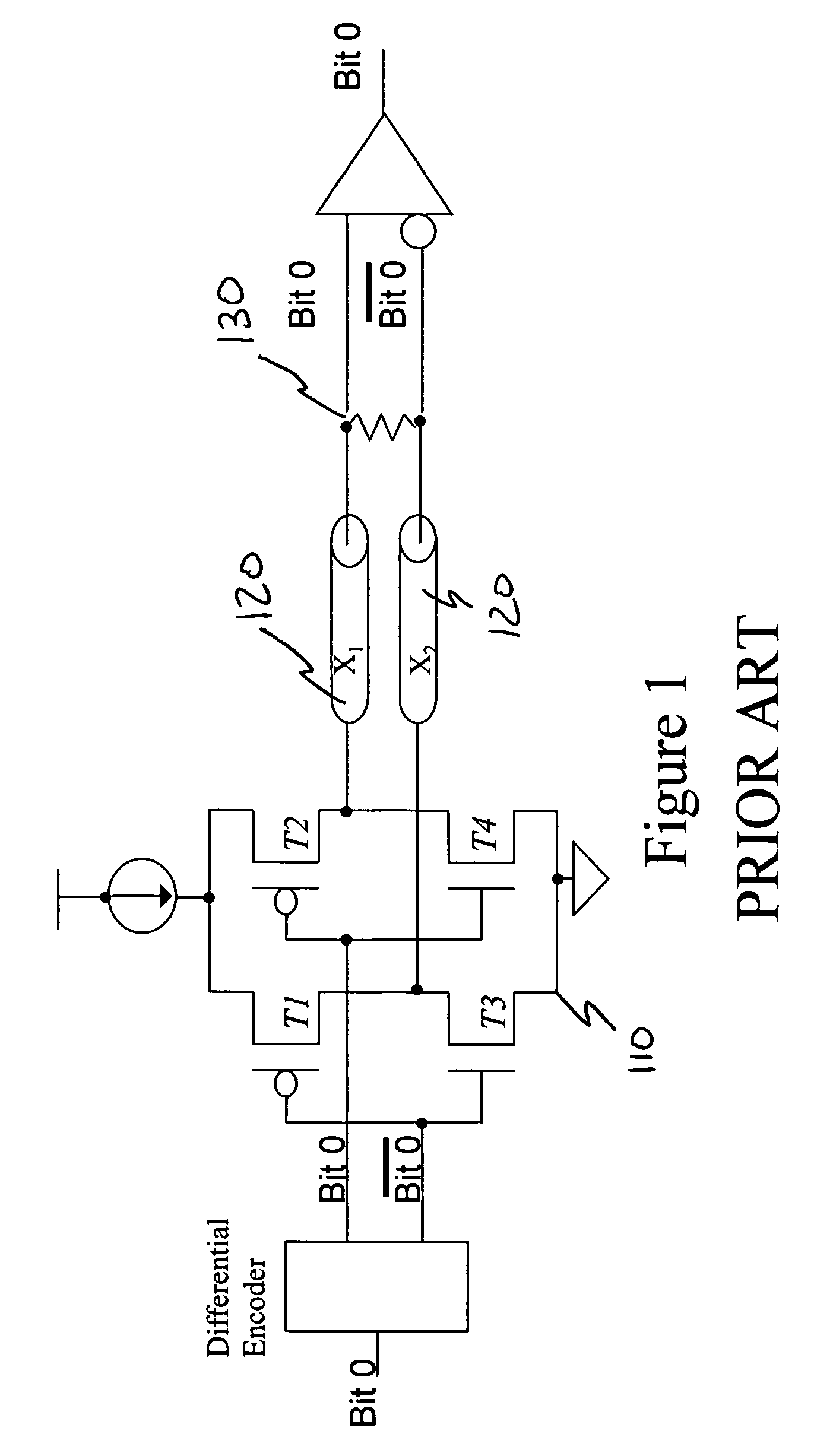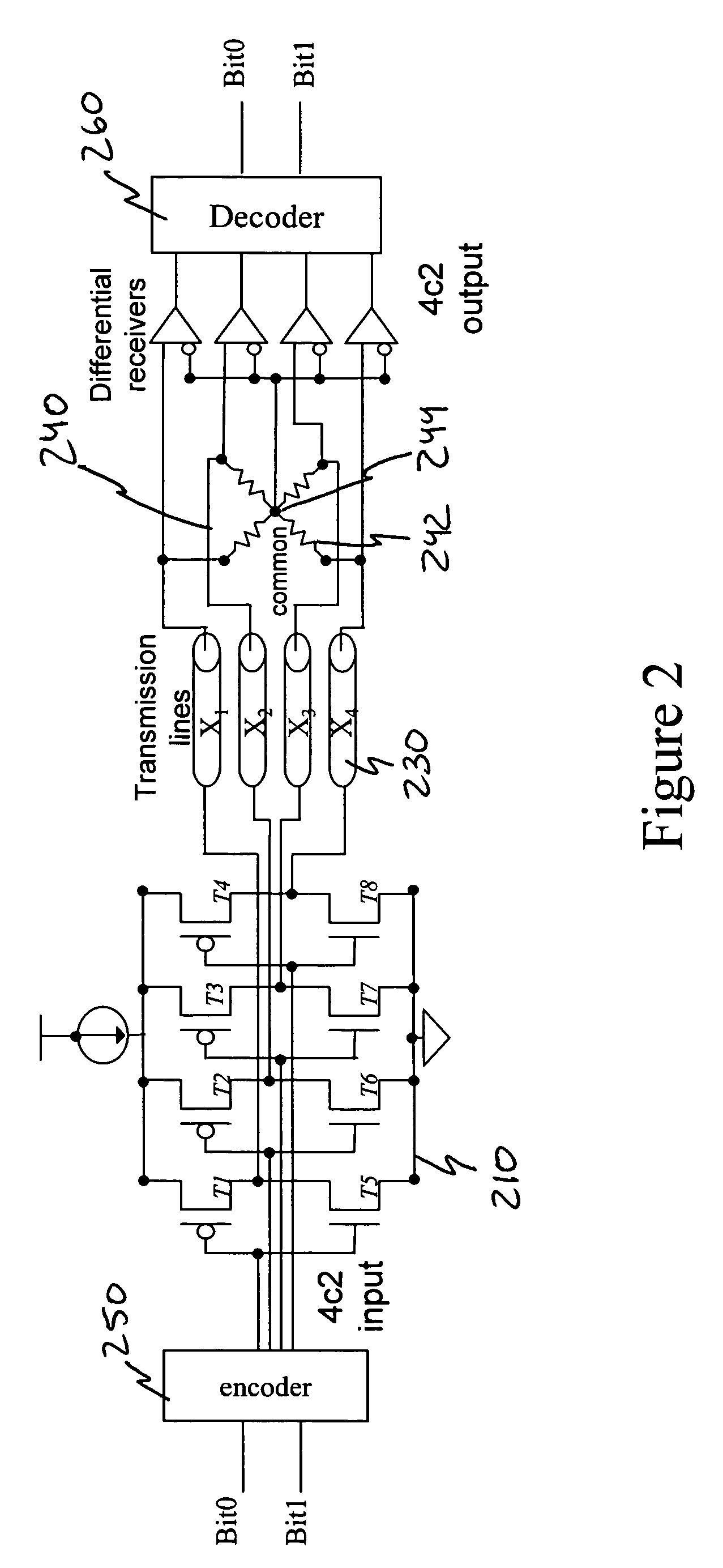Power efficient, high bandwidth communication using multi-signal-differential channels
a multi-signal, high-bandwidth technology, applied in the field of electronic signaling systems and methods, can solve the problems of differentially encoded busses having a significant disadvantage in high-speed communication links, large gap, and large area and pad count of differentially encoded busses, so as to increase the code density of equivalent differentially encoded bus structures and save power, area and pad count.
- Summary
- Abstract
- Description
- Claims
- Application Information
AI Technical Summary
Benefits of technology
Problems solved by technology
Method used
Image
Examples
Embodiment Construction
[0025]It is to be understood that the figures and descriptions of the present invention have been simplified to illustrate elements that are relevant for a clear understanding of the invention, while eliminating, for purposes of clarity, other elements that may be well known. Those of ordinary skill in the art will recognize that other elements are desirable and / or required in order to implement the present invention. However, because such elements are well known in the art, and because they do not facilitate a better understanding of the present invention, a discussion of such elements is not provided herein. The detailed description will be provided hereinbelow with reference to the attached drawings.
[0026]As briefly described above, the present invention utilizes a multi-bit differential signaling (MBDS) methodology applied to an improved communications link topology to increase code density and decrease power consumption without sacrificing the performance expected of convention...
PUM
 Login to View More
Login to View More Abstract
Description
Claims
Application Information
 Login to View More
Login to View More - R&D
- Intellectual Property
- Life Sciences
- Materials
- Tech Scout
- Unparalleled Data Quality
- Higher Quality Content
- 60% Fewer Hallucinations
Browse by: Latest US Patents, China's latest patents, Technical Efficacy Thesaurus, Application Domain, Technology Topic, Popular Technical Reports.
© 2025 PatSnap. All rights reserved.Legal|Privacy policy|Modern Slavery Act Transparency Statement|Sitemap|About US| Contact US: help@patsnap.com



